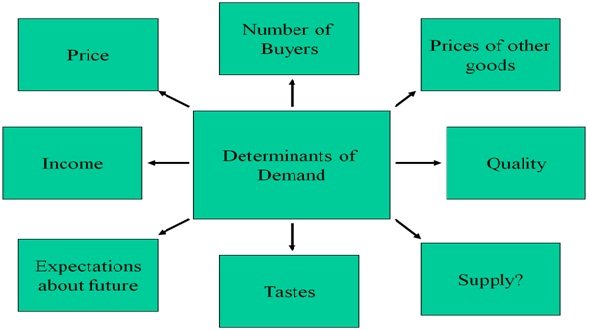What Is Demand Factor
Have you ever wondered about the factors that determine electricity consumption? How do engineers plan and manage the electrical usage of entire cities, buildings or factories? The answer lies in a concept called "demand factor".
Pain Points
Cities and power plants alike face the challenge of balancing energy production with energy consumption. Overloading a network can cause equipment damage, blackouts and even fires. On the other hand, producing more energy than necessary is inefficient and costly. That’s where demand factor comes in.
What is Demand Factor?
Demand factor is a ratio between the maximum possible load and the actual load used during a given period of time. In other words, it measures the level of electrical usage as compared to the electrical capacity. The result is expressed as a percentage, where a lower percentage signifies a lower demand factor and higher percentage signifies a higher demand factor. For example, if a building’s maximum load is 500 kW, and the actual load is 200 kW, the demand factor is 40%.
Summary of Main Points
In summary, demand factor is a crucial concept in managing electricity usage and capacity. It measures the ratio between maximum load and actual load, and is expressed as a percentage. High demand factors can cause equipment damage, blackouts and fires, while low demand factors can lead to inefficient energy production. Proper management of demand factors is necessary to maintain a balance between energy consumption and production, without compromising on safety and cost-efficiency.
What is Demand Factor and Why Does It Matter?
Let me share with you a personal experience to make this concept clearer. Imagine you’re hosting a party at home, and you have to decide how much food and drinks to prepare. If you overestimate the number of guests and prepare too much food, you’ll end up with leftovers that might go to waste. On the other hand, if you underestimate the number of guests and prepare too little food, your guests will leave hungry and unsatisfied. That’s where demand factor comes in. By measuring the ratio between maximum capacity and actual usage, you can estimate the perfect amount of food and drinks to prepare, without wasting resources or leaving guests hungry.

Demand Factor in Industrial Settings
The same concept applies to industrial and city-wide electrical networks. Engineers have to estimate the maximum load that might be required during peak hours, such as on hot summer days when air conditioning systems are heavily used. By measuring the demand factor on a regular basis, they can adjust the capacity of the electrical network to meet the actual needs, without overloading the system or wasting energy. This is why demand factor is such an important concept in electrical engineering.

The Formula for Calculating Demand Factor
The demand factor formula is simple. You take the maximum possible load (MPL) and divide it by the actual load used during a given period of time (AL). The result is multiplied by 100 to get a percentage. Here’s the formula in mathematical terms:
Demand Factor = (AL / MPL) x 100%
For example, if the maximum load of a factory is 1000 kW and the actual load used during a day is 500 kW, the demand factor is:
(500 / 1000) x 100% = 50%

The Importance of Proper Demand Factor Management
A high or low demand factor indicates improper management of electrical usage, which can lead to various problems. A high demand factor can cause equipment to overheat, blackouts and electrical fires. On the other hand, a low demand factor implies inefficient use of electrical capacity, which can lead to excess energy production, higher costs and environmental pollution. Therefore, it’s important to regularly measure and adjust the demand factor to meet the actual electrical needs, without compromising on safety, cost-efficiency and environmental sustainability.

Question and Answer
What is the difference between maximum load and actual load?
Maximum load refers to the highest amount of electrical energy that can be used in a system, without causing equipment damage or blackouts. Actual load refers to the amount of energy that is actually used during a given period of time. The difference between maximum load and actual load is measured by demand factor, and can help engineers optimize energy production and usage.
Why is demand factor important?
Demand factor is important for ensuring that electrical networks are safe, efficient and cost-effective. By measuring the actual usage of electrical energy as compared to the maximum capacity, engineers can determine the optimal amount of energy production and usage, without overloading the system, wasting energy or causing S equipment damage.
What can cause a high demand factor?
A high demand factor can be caused by several factors, such as inefficient energy usage, over-reliance on heavy machinery or electrical equipment, improper maintenance of electrical systems, and faulty wiring or connections. High demand factors can lead to high energy bills, equipment failure, blackouts and even electrical fires.
What can be done to lower the demand factor?
There are several ways to lower the demand factor, such as installing energy-efficient appliances, using renewable energy sources, scheduling maintenance of electrical systems, reducing heavy machinery usage during peak hours, and ensuring proper insulation and ventilation. Lowering demand factor not only saves energy and reduces costs, but also promotes environmental sustainability and safety.
Conclusion
Demand factor is a crucial concept in electrical engineering, which measures the ratio between maximum load and actual load. It helps engineers and managers optimize energy production and usage, without compromising on safety, cost-efficiency and environmental sustainability. Improper management of demand factor can lead to several problems such as equipment damage, blackouts and electrical fires. Regular measurement and adjustment of demand factor is necessary to ensure a safe, efficient and sustainable electrical network.
Gallery
Demand Factor Meaning & Definition | MBA Skool

Photo Credit by: bing.com / demand factor factors definition primary marketing depends which business
How To Calculate Demand Factor Simple Formula New Explanation - YouTube

Photo Credit by: bing.com / demand factor formula calculate
Demand Factor Formula Calculations And Solved Examples • Electrical

Photo Credit by: bing.com / calculations
Electrical Engineering Formulas: Demand Factor

Photo Credit by: bing.com / demand factor electrical formula maximum formulas load engineering power mw find xyz
Demand Factor - YouTube

Photo Credit by: bing.com / demand factor
0 Response to "What Is Demand Factor"
Posting Komentar